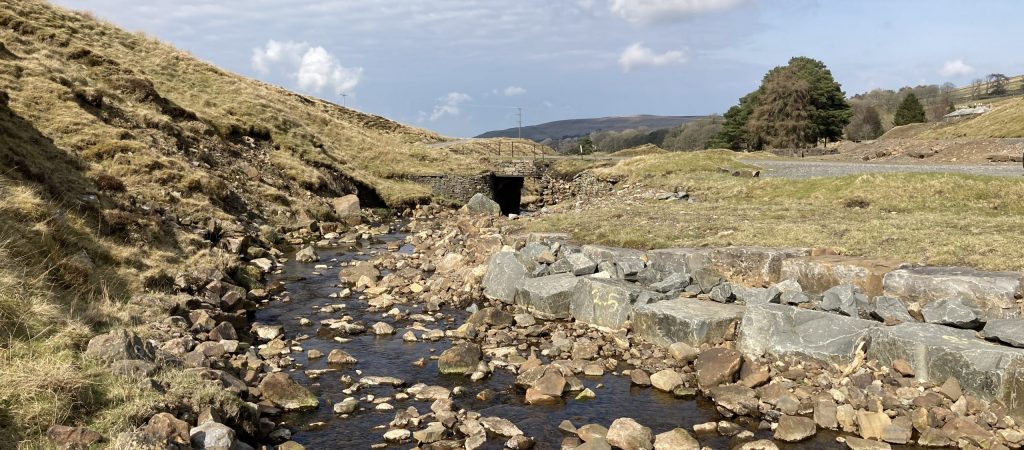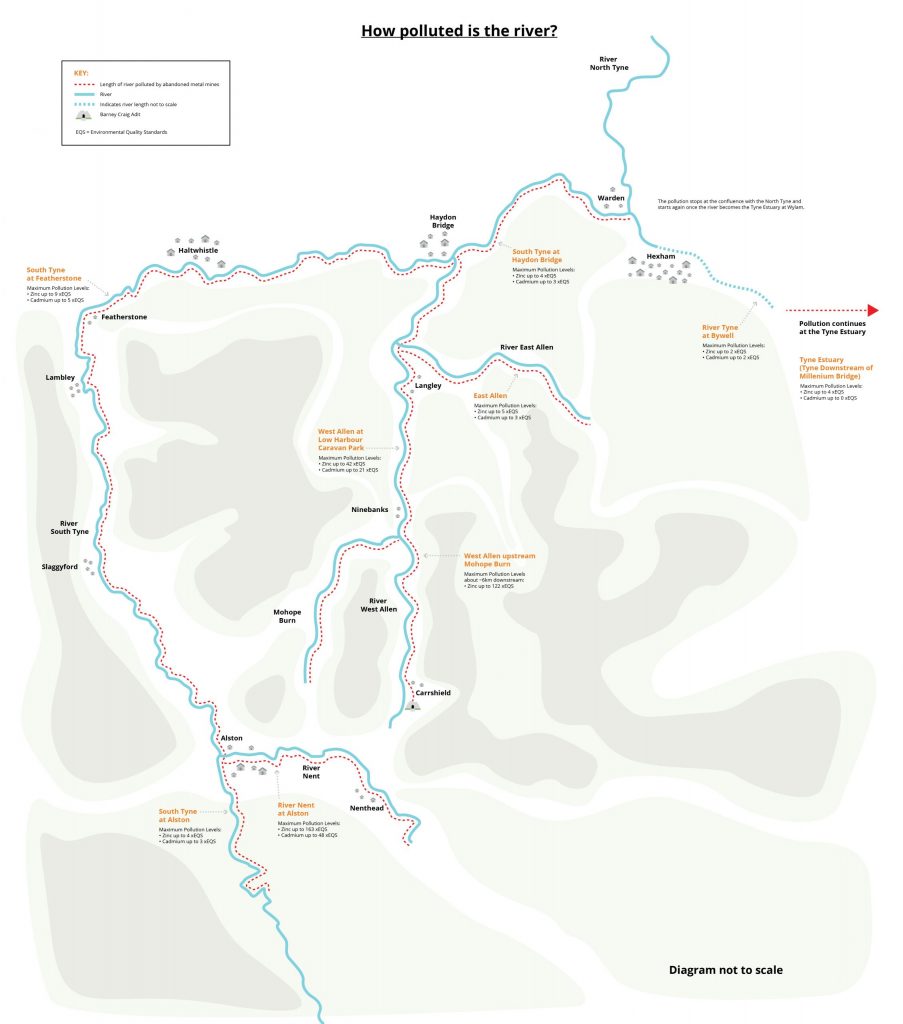
Rivers polluted by Barney Craig mine water
Monitoring by the Environment Agency over many years shows that the mine water flowing out of the Barney Craig adit is the most significant source of zinc and cadmium (around 3 tonnes per year) polluting the River West Allen. This mine water pollutes at least 40km of rivers – in the River West Allen and into the River South Tyne. These metals ultimately collect in sediments in the Tyne estuary.
In the River West Allen, the metal concentrations are so high that they cause severe harm to river wildlife like river insects and fish. At lower river flows, the zinc concentration measured in the river downstream of the Barney Craig Mine can be up to 180 times the safe level for river wildlife. This abandoned mine water drainage tunnel is part of the historical Carrshield lead mine site.
Most of the lead pollution comes from rain falling on the abandoned mine wastes in the upper catchment, such as the Carrshield Tailings Dam and Coalcleugh sites: Project to prevent pollution completed at Coalcleugh.
For more information about the length of rivers polluted, see the Tyne Management Catchment Report: Tyne management catchment: baseline length of rivers and estuaries polluted by abandoned metal mines – GOV.UK
The safe level of metals for river wildlife is set by Government using “Environmental Quality Standards” (EQS) which is based on extensive ecotoxicological testing. The Environment Agency compares the results of water quality sampling with the EQS, this quantifies the pollution level, or how far above the EQS the river is. If the measured concentration is higher than the EQS, then experts expect there to be harm to river wildlife and the river is legally considered to be polluted. The diagram below represents the length of rivers polluted within the catchment:

The Environment Agency’s monitoring over many years shows that removing metals from the mine water flowing out of the Barney Craig adit would significantly improve at least 40 km of river length. These water quality improvements would be seen within a few months of a treatment scheme starting to operate.
Unless action is taken, the pollution will continue for hundreds more years and so the WAMM Programme wants to build a mine water treatment scheme. Once built, the scheme would need to be operated indefinitely.
Monitoring carried out by the Environment Agency shows that Barney Craig mine water discharge contains high levels of dissolved metals, as shown in the table below. The severity of the metal pollution is highest during lower flows when there is less dilution of the mine water
| Sample point name | Total Zinc & Cadmium load T/pa* | Dissolved Zinc & Cadmium load T/pa* | Flow l/s** | |
| Barney Craig | Average | 3 | 3 | 12 |
| Barney Craig | Min | 1 | 1 | 8 |
| Barney Craig | Max | 8 | 7 | 46 |
*T/pa – tonnes per annum
**l/s – litres per second
There is a vast reservoir of metals underground that are slowly being washed out of the mines. It will take more than a hundred years before metal concentrations in the mine water discharge have decreased to the level that they no longer cause river pollution. Unfortunately, this means we will need to continue operating the treatment scheme indefinitely. The mine water treatment scheme will be operated by the Mining Remediation Authority.